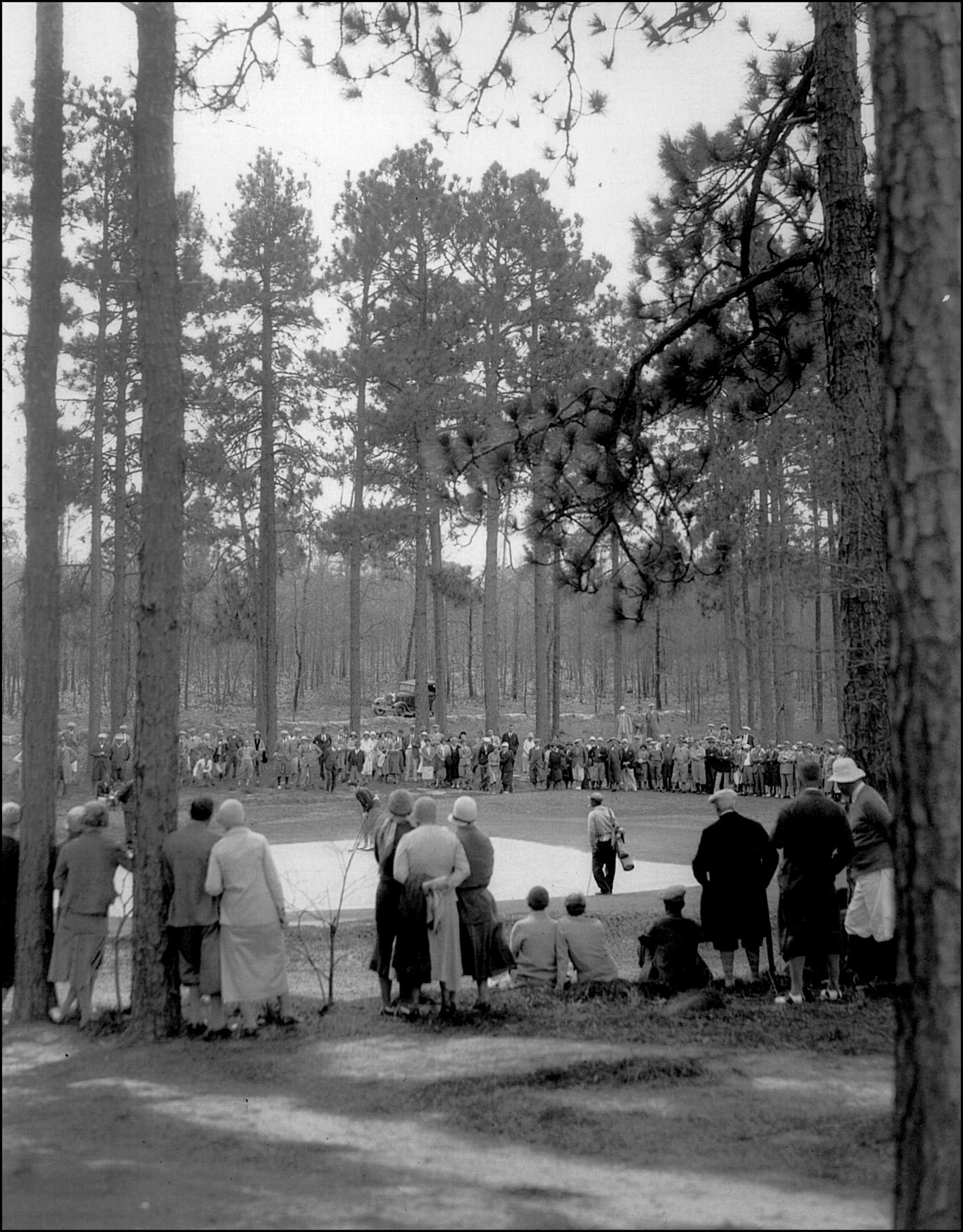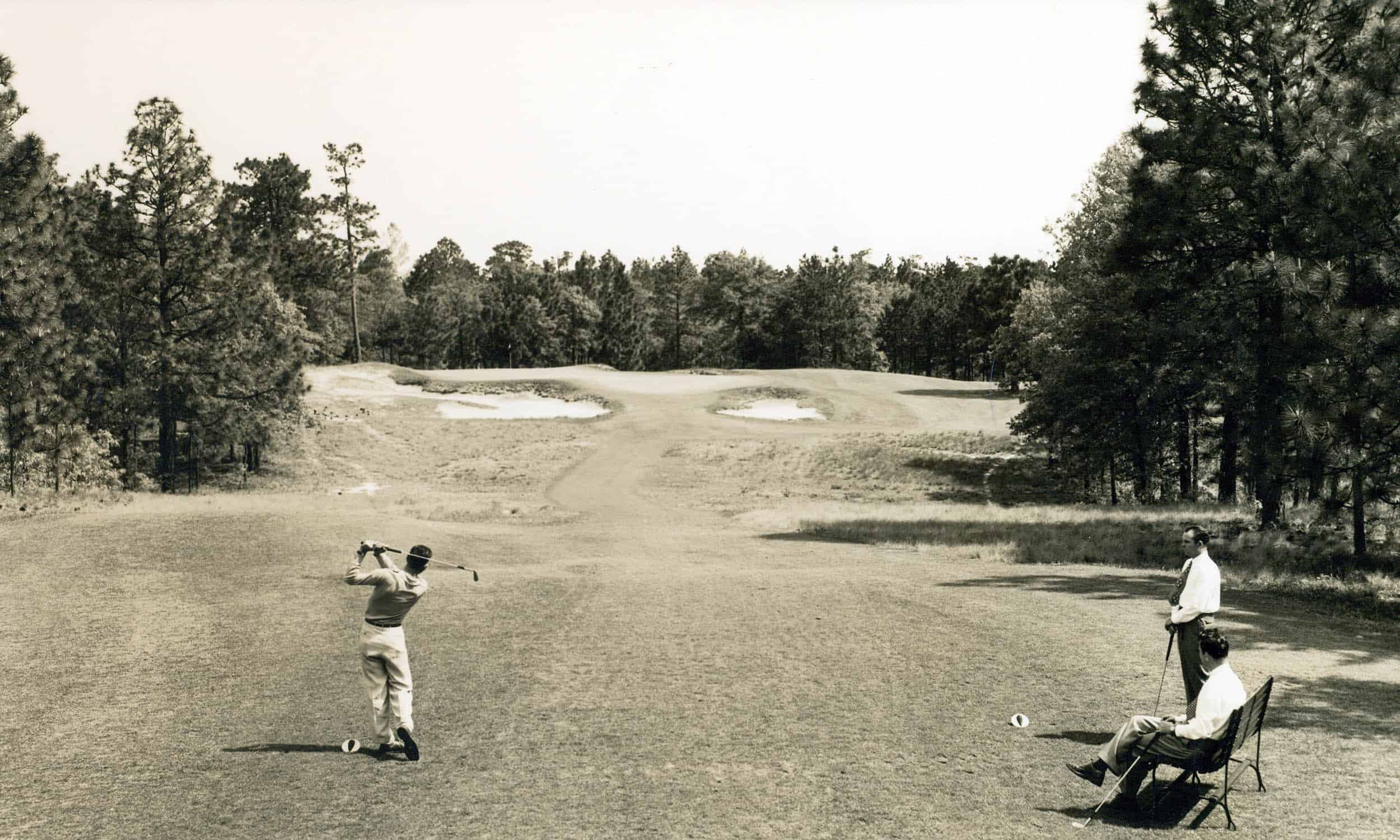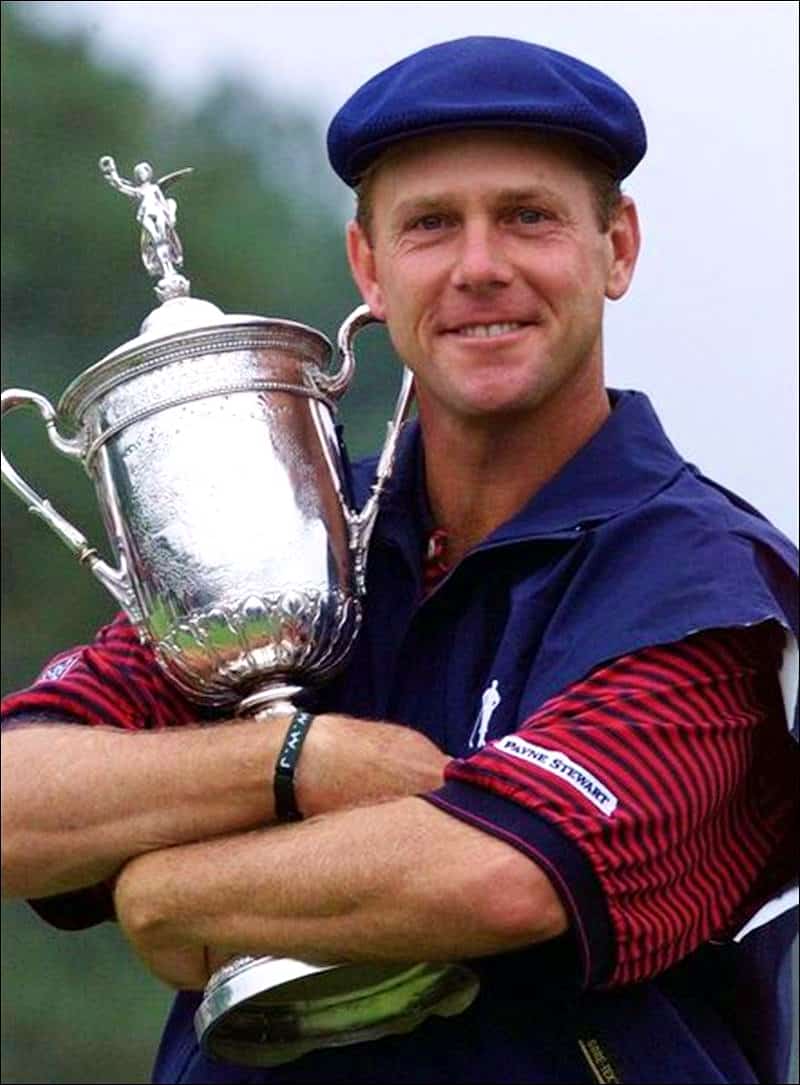
Pinehurst No. 2
The Late, Lamented North and South Open
BY LEE PACE
Earlier in the week we wondered how The Masters and Augusta National might have evolved and look today had Bobby Jones actually hired Donald Ross, as he initially planned to do, instead of Alister MacKenzie to design his new golf course on the outskirts of Augusta.
Continuing these Masters week “what if” scenarios, it’s an interesting exercise to wonder what the PGA Tour might look like today had Pinehurst’s Richard Tufts not decided in 1952 to eliminate the half-century long tradition of one of the day’s premier events, the North and South Open.
It was the idea at the turn of the previous century from a New York advertising executive named Frank Presbrey for this fledging resort in the North Carolina Sandhills to generate publicity by staging regular golf competitions. And thus in 1901, Pinehurst owner and founder James Tufts and son Leonard initiated the United North and South Championships for amateurs of both genders and another event designated “Open,” meaning amateurs and professionals could both compete.
They were enormously popular and served their purposes very well.

Pinehurst No. 2, 9th Hole
The resort and its growing inventory of golf courses (four by 1919) designed by a man from the home of golf (the Scotsman Ross) provided a template for the growth of golf in America. The best players came to Pinehurst, competed for trophies, gave lessons to the members and hotel guests, and everyone had a grand time.
“Pinehurst was absolutely the pioneer in American golf,” said Ross, who was hired by James Tufts in 1900 to serve as golf professional, caddie master, green superintendent and course designer. “While golf had been played in a few places before Pinehurst was established, it was right here on these Sandhills that the first great national movement in golf was started. Men came here, took a few golf lessons, bought a few clubs and went away determined to organize clubs.”
Walter Travis and Francis Ouimet won early North and South Amateurs (the word “United” was dropped from the official moniker). Glenna Collett, Maureen Orcutt and Estelle Lawson Page dominated the Women’s North and South. Jim Barnes, Walter Hagen, Horton Smith, Henry Picard, Paul Runyan and Bryon Nelson won the North and South Open championship through the 1930s, an era when the event was considered along with the U.S. Open, British Open, PGA Championship, Western Open and British PGA Match Play as the “major” championships in all of golf. The pro tour spent February and early March in Florida, then migrated north to Pinehurst, Greensboro and for many years to Asheville. In 1934 it began a certain tradition in the Georgia foothills as well.
A half century into the process, however, the third-generation leadership of the founding family had a change of heart.
Richard Tufts decided in early 1952 that he’d had enough of professional golf at Pinehurst. Professional golf to Tufts’ taste was too much like a carnival, and he was stung by what he perceived as a slap in the face by the 1951 U.S. Ryder Cup team. After whipping the team from Great Britain and Ireland in the Ryder Cup in early October, only five members of the nine-man contingent remained in Pinehurst for the North and South Open the following week. The pros often complained about the North and South’s relative low purse; Tufts countered that some of that prize money went to players in the form of free room and board in The Carolina. Tufts discontinued the North and South Open and replaced it with the North and South Senior Amateur.
“The happy, friendly atmosphere of the old North and South had vanished,” Tufts noted, “and it seemed that the money changers had taken possession of this particular temple of golf. It became all too clear that present-day professional golf had nothing to contribute to the development of a true golfing atmosphere at Pinehurst.”
Fraser Smith was eight years old when his family moved to Pinehurst in 1946, and he spent his adolescent and teen years in Pinehurst before going off to the University of North Carolina and a northeastern newspaper career. He returned to Pinehurst early in the fall of 1973 to examine the company that bought Pinehurst from the Tufts family three years earlier, the Diamondhead Corp., and his findings were published in a lengthy essay in Sports Illustrated. The Tufts, Smith observed, thought that professional events “over-shadowed their town and made the game secondary to the tournament.”
“One served golf, they thought, not with the traveling circus of the tournament and its superstars but by their absence,” Smith wrote. “The old Pinehurst approach was not an attempt to bring true altruism into resort management. It was the result of traditions that dictated certain rules: you made your money first and then you came to Pinehurst where gracious living was the primary occupation. Hard driving for bucks would have been seen as crass and disruptive, particularly if the owners of the town had done it.”
So for two decades in the 1950s and ’60s, Pinehurst and its renowned No. 2 course had no presence in professional golf. An aggressive and ambitious new boss under the new Pinehurst ownership regime in the early 1970s set out to change that. Bill Maurer was attending The Masters in 1971 when the significance struck him of what Tufts had disbanded two decades earlier.
“I was thinking to myself that it is unfortunate a tournament as great as The Masters is not in its fiftieth year at Pinehurst,” Maurer recalled later. “But the people who had Pinehurst before us apparently didn’t think that way.”
Maurer succeeded in bringing the PGA Tour back to Pinehurst for a decade—beginning with that odd two-week, 144-hole World Open in 1973—but the tournaments were beset by bad dates, poor attendance and, in the end, lack of a motivated sponsor and the financial problems of the parent company that led to Diamondhead losing the resort and club to the banks in 1982.

The U.S. Open has been a perfect championship for Pinehurst.
The modern era of Pinehurst under the Dedman family ownership is marked by a philosophy of finding a happy medium. The club and resort exists to serve its members and guests. But it’s not a bad idea and not terribly inconvenient to all concerned to open one’s doors every decade or so and welcome America’s national golf championship. The U.S. Open is a particularly good partner for Pinehurst and its No. 2 course, as the June dates don’t conflict with the prime spring and fall resort seasons, and the greens are in perfect condition before the onset the oppressive late-summer heat and humidity.
It would have been interesting to see how the North and South Open would have evolved had Richard Tufts not pulled the plug. But in the end, his prescience was quite remarkable; he would be flabbergasted by the money in golf today. Meanwhile, Pinehurst and Augusta each found their appropriate compartment in the world of golf.
Lee Pace’s book, “The Golden Age of Pinehurst—The Rebirth of No. 2,” is available in all retail shops at Pinehurst.

